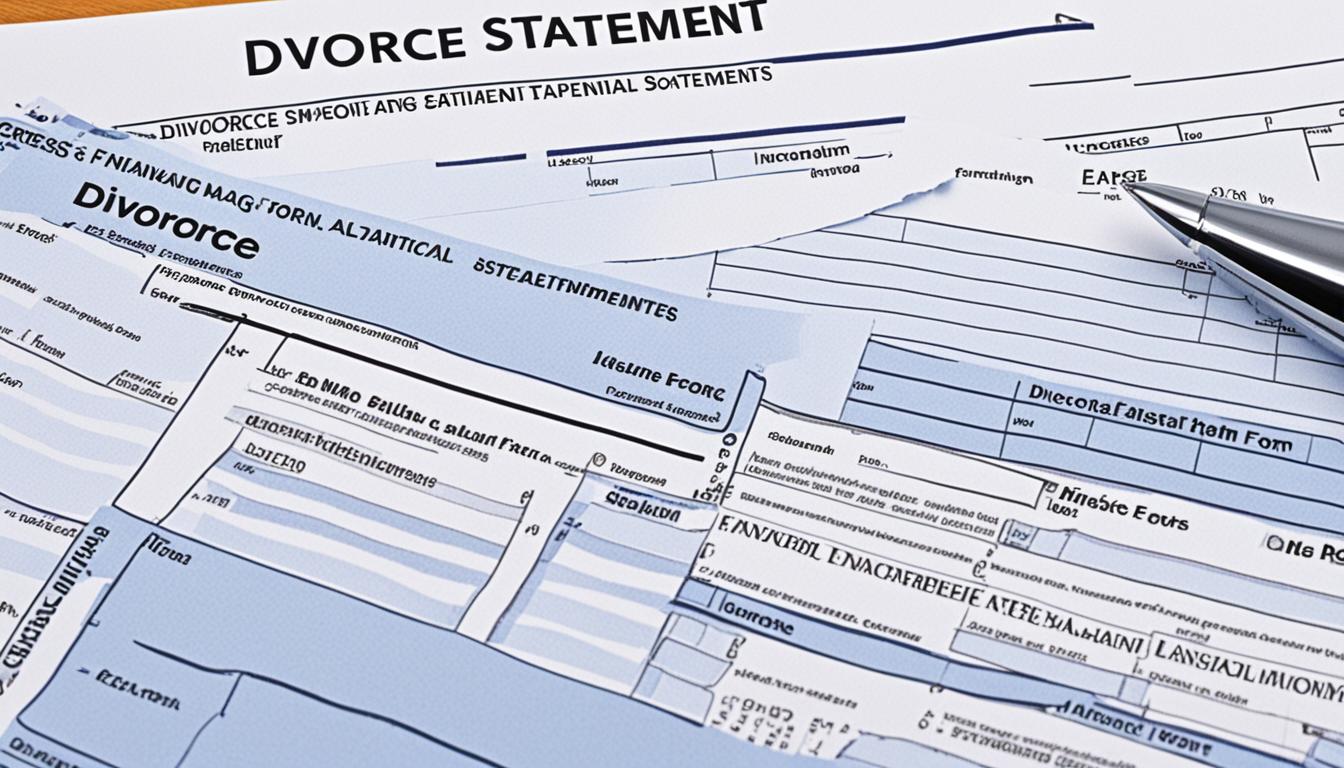Before filing for divorce, gather all your financial documents, including bank statements, tax returns, and credit reports. Make a detailed inventory of your assets and liabilities, like property, debts, and investments. Decide how joint accounts will be handled and set up new accounts if needed. Review your budget and plan for future expenses. Also, update legal documents and retitle assets. Stay with us to explore how to organize everything for a smoother process.
Key Takeaways
- Gather all relevant financial documents, including bank statements, tax returns, credit reports, and asset records.
- Create a detailed inventory of assets and liabilities, clarifying ownership and current balances.
- Open individual bank, credit, and utility accounts; close joint accounts post-division.
- Review and update personal budgets, accounting for new expenses and future financial needs.
- Verify legal documents, retitle assets as necessary, and update beneficiary designations before filing.

Facing a divorce can be overwhelming, but staying organized with a detailed financial checklist can make the process smoother. The first step is gathering all your important financial documents. Collect recent monthly bank statements and copies for your legal counsel. Make sure to include all tax returns filed jointly or separately, as these will be essential for dividing assets and understanding your financial history. Request full credit reports from Equifax, Experian, and TransUnion to identify errors or surprises that could impact your financial standing. Also, gather documents related to your mortgage, lease agreements, utility bills, and recent statements for all properties and services. Don’t forget to include records for retirement accounts, investments, insurance policies, and any outstanding debts. Reviewing your financial documents regularly can help you stay informed about your financial position.
Next, identify and list all your assets and liabilities. Create a detailed inventory of everything you own, including real estate, personal property, business interests, and investments. Be clear about what’s marital property versus separate property, such as premarital assets, gifts, or inheritances. Review all liabilities like mortgages, credit card debts, loans, and utility bills, noting the ownership and current balances. This will help you understand your net worth and prepare for asset division. Keep in mind the tax implications of your assets, including potential capital gains or exemptions, which could affect the division process.
Create a detailed inventory of assets and liabilities, including real estate, personal property, debts, and their tax implications.
Managing your financial accounts is also vital. Divide balances of joint bank accounts as outlined in your divorce agreement, and close those joint accounts once the division is finalized. Establish individual bank accounts, credit cards, and utility accounts under your name only. Cancel joint signing authority and shared financial management access to prevent future complications. Notify creditors and organizations with automatic payments about your change of circumstances and update your contact information. Additionally, update beneficiary designations on life insurance, retirement, and other financial accounts to reflect your current wishes.
Assess your current budget and plan for future expenses. Update or create a new personal budget that considers changes to your income, expenses, and new obligations after separation. Review ongoing costs like mortgage payments, utilities, child care, and tuition, and estimate future expenses related to legal fees, spousal support, and child support. Planning for lifestyle adjustments now can help you avoid financial strain later. It’s advisable to consult a tax professional to determine your new filing status and tax strategies, ensuring you’re prepared for any changes in your financial landscape.
Finally, prepare all legal documentation. Verify the existence and terms of any prenuptial or postnuptial agreements, and avoid signing any documents or making large transactions without legal advice. Obtain multiple copies of the finalized Divorce Decree for record-keeping and asset retitling. Plan for retitling major assets like real estate and vehicles after the divorce, and establish new legal documents such as wills, powers of attorney, and healthcare directives. Review and update beneficiary information on retirement and pension accounts, and evaluate how the divorce might impact your Social Security benefits or veteran entitlements. [Consulting with a financial advisor can help you develop a comprehensive post-divorce financial plan to secure your future.
Frequently Asked Questions
How Do I Protect My Credit Score During Divorce?
To protect your credit score during divorce, you should review all your credit reports regularly and dispute any inaccuracies. Close joint accounts and remove your name from authorized user accounts to prevent future liability. Keep making timely payments on remaining accounts, and consider freezing your credit to prevent unauthorized activity. Create separate accounts and credit profiles, and stay proactive by monitoring your credit and updating institutions about your marital status.
What Happens to Shared Debts After Divorce?
After divorce, shared debts are divided based on your state’s laws and your settlement agreement. If you’re in a community property state, all debts incurred during marriage are shared equally. Usually, joint debts remain your responsibility until paid off or refinanced, even after divorce. To protect yourself, you should close joint accounts, refinance debts in your name, and ensure the court’s order clearly assigns responsibility for each debt.
Can I Change Beneficiaries on Financial Accounts?
Yes, you can change beneficiaries on your financial accounts, but only after your divorce is finalized in most cases. During divorce proceedings, court orders or state laws might restrict these changes, and some accounts require spousal consent. To guarantee your assets go to the right people, review all beneficiary designations, submit updated forms to the financial institutions, and consult with an attorney if needed.
How Do I Divide Complex Investment Portfolios?
You divide complex investment portfolios by first identifying each asset’s value, like a couple splitting a $200,000 stock portfolio. You can transfer securities in-kind or liquidate assets to split proceeds. For example, you might transfer specific stocks directly or sell and split the cash. Consider tax implications and use tools like QDROs for retirement accounts. Work with financial experts to make certain of fair division and future financial stability.
What Are the Tax Implications of Dividing Assets?
When dividing assets, you generally avoid immediate tax consequences, especially with transfers like cash, retirement accounts, and investments, which are tax-free at transfer. However, you should be aware that future sales of assets, like real estate or stocks, could trigger capital gains taxes based on the carryover basis. Carefully document the original cost and consider potential tax liabilities to plan effectively and avoid surprises down the road.
Conclusion
Think of your finances like a garden—you need to tend to it carefully before you split ways. I once knew someone who overlooked this step and ended up tangled in unexpected debts, much like weeds taking over. By checking your accounts, debts, and assets now, you’re planting seeds for a smoother future. Taking these steps guarantees you’re not left picking up weeds later, but instead, cultivating a fresh start—ready to grow anew.










